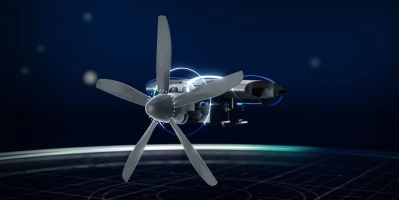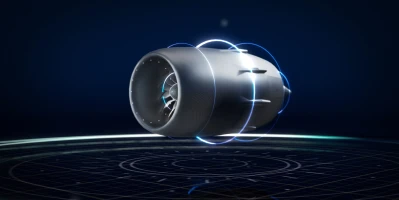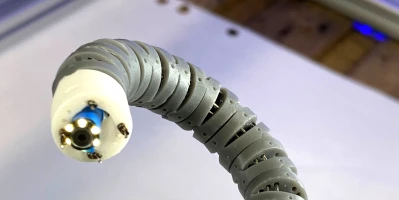innovation
MTU’s Leading Technology Roadmap: paving the way for innovation
In a continuous drive to enhance engine design, MTU Aero Engines is pursuing a Leading Technology Roadmap for innovations in its strongest areas of expertise.
04.2018 | author: Silke Hansen | 5 mins reading time
author:
Silke Hansen
writes for AEROREPORT as a freelance journalist. For over ten years, she has covered the world of aviation, focusing on technology, innovation and the market. Corporate responsibility reporting is another of her areas of specialization.

The figures are impressive to say the least: MTU Aero Engines submits some 400 patent applications and registers around 200 inventions on average every year. You could liken the company to a fountain of ideas. And that’s the way it should be. After all, a strong innovation culture and finely tuned technology processes secure its crucial technological leadership. Aviation is a research-intensive industry characterized by high-technology products. For this reason, innovation is a key aspect of MTU’s partnerships with engine OEMs and central pillar of long-term success.
“Driven by our innovative strength, MTU plays an active role in shaping aviation, both today and in the future.”
“Driven by our innovative strength, MTU plays an active role in shaping aviation, both today and in the future,” explains Dr. Stefan Weber, Senior Vice President, Technology & Engineering Advanced Programs at MTU. “After all, the only way to ensure our continued success in the long term is to guard and extend our technological lead. “And innovation and creativity are the key,” adds Weber.
To harness the incoming waves of new developments, MTU is pursuing a Leading Technology Roadmap that serves to chart the course of its flagship modules: compressors, turbines and turbine center frames. The roadmap is comprised of 150 individual projects from all technical departments, development, production, assembly and maintenance, which pave the way for the launch of a new engine generation by 2030+ an enhanced and above all even cleaner and quieter Geared Turbofan™ (GTF). After all, the number of passengers choosing to travel by air is increasing every year.
MTU’s research and development activities focus on five key areas in which the company is driving promising solutions towards production readiness. Because new technologies have to prove what they can do before they make it onto the wing of an aircraft.
Enhancing the compressor
MTU developers are exploring ways to increase overall pressure ratios to over 50:1. High pressures allow the compressor components to be scaled down in size. Overall, this advances the compressor’s efficiency and stability. To achieve these results, MTU’s engineers are taking the fundamentally new approach by optimizing the high- and low-pressure compressor designs together to create an integrated compression system. To this end, the engineers are using a unique two-shaft compressor rig at the German Aerospace Center (DLR) in Cologne.
Making what’s good even better
The high-speed low-pressure turbine—one of the core components in the Geared Turbofan™ engine—is set to get a full upgrade in terms of its efficiency, weight, noise emissions, robustness and cost-effectiveness. Quite a feat given that MTU’s turbines are already relatively light and yet very efficient.
Using new materials for the turbine
The roadmap focuses on high-temperature, lightweight materials as the key to achieving further weight reductions—of up to ten percent—and a more efficient use of cooling air. Decreasing the weight of components results in lower fuel consumption and fewer CO2 emissions. This calls for nothing but the most superior metals such as advanced nickel-based materials or brand-new materials—known as “beyond nickel-based superalloys”, such as intermetallic and ceramic composites.
Greener, quieter, more efficient: The Geared Turbofan™ 2030+

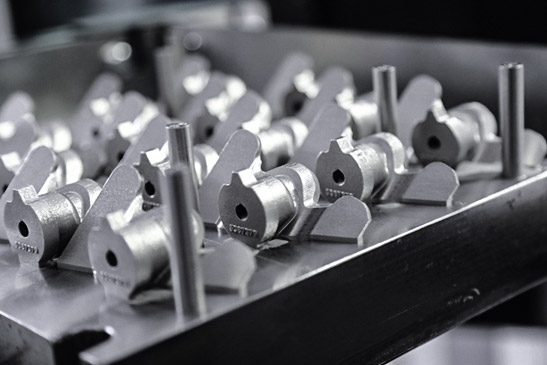

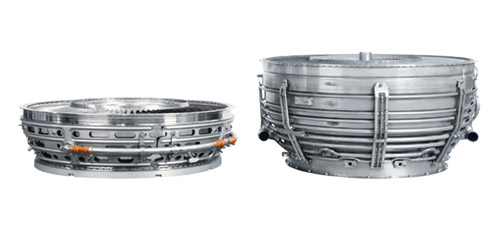

Turning visions into reality
Tomorrow’s engines are increasingly designed on computers. MTU is building up its expertise in another key technology, virtual design, and expanding its use of new simulation techniques to develop materials and optimize production processes, for example. Digital transformation is well underway at the company and numerous digitalization projects have been launched across all areas. The end goal is to introduce the use of simulations and digital processes across the board and connect the various steps of the entire value creation process, from product development to finished engine, and map them virtually as well.
In parallel to the physical engine component, a digital twin collects and stores all the data generated from development and operations all the way to maintenance and repair. This data can then be used to leverage all potential for product improvements. At MTU, Industry 4.0 is accelerating the development and production of products with ever-increasing degrees of complexity, while concomitantly improving efficiency and quality—for example by eliminating the need for time and cost-intensive tests on new materials.
Taking production to the next level
MTU is continuing to develop additive manufacturing techniques, such as selective laser melting, with the aim of stepping up their use. In line with the roadmap, the company will gradually expand the range of components it produces using additive methods. In the future, new processes of this kind will enable complex components to be manufactured more quickly, cost effectively and with higher degrees of flexibility, without the need for conventional tools. They also give engineers unprecedented levels of freedom in component design, and at the same time offer potential for optimization.
“The GTF concept still has enormous potential for improvement and with the developments and enhancements outlined in our roadmap, we’ll be able to meet the targets for stage 2 by 2030+.”
Staged goals until 2050
MTU’s Leading Technology Roadmap forms part of a larger agenda at MTU: the Clean Air Engine (Claire) technology program. Claire sets out staged goals for achieving reductions in fuel consumption, CO2 emissions and noise by 2030 and 2050. “The GTF concept still has enormous potential for improvement and with the developments and enhancements outlined in our roadmap, we’ll be able to meet the targets for stage 2 by 2030+,” Weber explains. And initial pilot concepts already look very promising for achieving the highly ambitious targets for stage 3 by 2050. “At this stage we’ll need disruptive approaches to the engine, and above all to the design of the aircraft itself,” says Weber.







